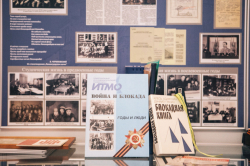If you have ever googled a pre-20th century Russian historical figure or an event, you might’ve noticed that articles about them often include not one but two dates, and the second one is written in brackets.
For example, let’s see when Leo Tolstoy lived. His page on the Russian Wikipedia says that he was born on August 28 [September 9], 1828 and died on November 7 [20], 1910. How come the great author has two birthdays and two dates of death?
If we follow the hyperlinks that are embedded into the dates in brackets on Wikipedia, we’ll learn that those are the dates in the Gregorian calendar – the one in use nowadays around the world, hence sometimes called новый стиль (novyi stil’ – “the new style”). So, Leo Tolstoy is usually commemorated on September 9 these days, even though if we were to travel back in time and ask the writer when his birthday is, he would say August 28.
In Russia, the Gregorian calendar was adopted on February 24, 1918 by the decision of the new Soviet authorities and Vladimir Lenin in particular. The transition to the new dating system aimed to make the country live by the calendar accepted by most countries all over the world was one of the many drastic changes that came with the new regime.
The Russian Orthodox church, however, still celebrates religious holidays according to the previously used system – the Julian calendar. That’s why, strictly speaking, it’s not quite right to say that Orthodox Christians celebrate Christmas on January 7 while Catholics do it on December 25. It’s just that January 7 (in the Gregorian calendar or the new style) equals December 25 (in the Julian calendar, or the old style).
“Why do these two different calendars even exist?” you might ask. The thing is, the Julian calendar had a weak spot – it assumed that there were 365.25 days in every year, hence the calendar dates slowly drifted away from the astronomical ones. This meant that the date of the equinox was calculated incorrectly, which in its turn led to an incorrect date for celebrating Easter.
The Gregorian calendar, introduced in the 16th century, corrected this mistake by making adjustments to the leap year system (by removing excess leap days) and the length of a calendar year (it became shorter by only 0.0075 days – but over the centuries, the difference became significant). Mystery solved!




